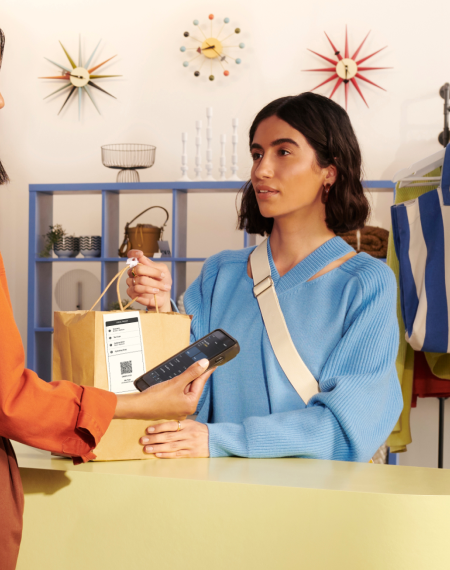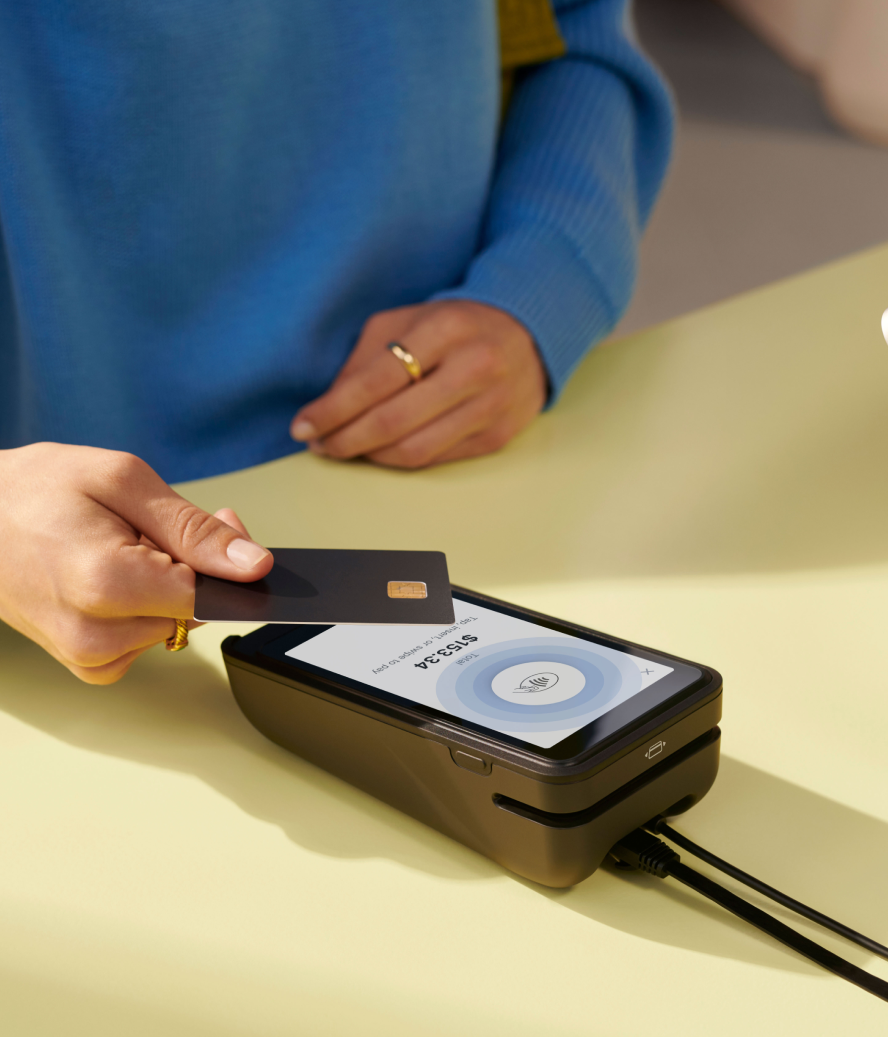Digital transformation isn’t a luxury for retailers anymore. It’s a ticket to staying competitive, relevant, and top of mind for customers.
Spending is accelerating, and cloud technologies are leading the way. Worldwide spending on digital transformation reached $2.15 trillion in 2023, up more than 16% from the previous year. As of 2023, over 90% of organizations worldwide had implemented cloud technologies, the highest adoption rate of any emerging technology.
Think of digital transformation as giving your retail organization a tech makeover from top to bottom. Done well, it’s a tactic that can boost your brand reputation and increase sales.
What is retail digital transformation?
Digital transformation in retail occurs when digital technologies are integrated into all areas of your retail business. It changes how businesses operate, sell, and connect with customers.
Some examples of digital transformation include:
- Creating an ecommerce store
- Developing a mobile shopping app
- Using customer data to personalize experiences
- Providing seamless integration between online and offline channels
- Implementing systems for real-time inventory management
A retail digital transformation means reimagining your whole business model from a digital perspective. You can also use tech to streamline your operations and focus on what really matters, keeping your customers happy and your business thriving.
What’s influencing the move to digital transformation?
Digital transformation in retail is not really a trend; it’s a necessity to compete in today’s market. Global ecommerce sales are expected to total $6.33 trillion in 2024, with mobile ecommerce sales accounting for nearly $2.5 trillion. This number is expected to continue growing over the next few years.
Retailers are increasingly turning to big data, AI, and the Internet of Things (IoT) to gain insights and enhance customer experiences. Retail AI spending is forecasted to grow from $5 billion in 2022 to more than $31 billion by 2028, according to The World Economic Forum.
Consumer expectations are also changing, and competition is fierce. Sixty percent of shoppers expect companies to understand their unique needs and provide personalized experiences. To stay relevant, retailers are reimagining their entire model with a digital-first mindset.
Challenges of retail digital transformation
Retailers have a lot to gain from digital transformation, but it doesn’t come without its hurdles.
Change is hard
Organizations tend to struggle with successful digital transformation due to their deeply ingrained traditional practices. Many retailers have operated using the same business models for decades, which makes it hard to pivot to a digital-first strategy.
A 2020 study from Boston Consulting Group found that only 30% of digital transformations meet or exceed their target value. Integrating new technologies with legacy systems, retraining staff, and changing organizational culture is challenging.
Budget constraints
A complete digital transformation requires a lot of money to cover new technology, staff training, and disruptions to regular operations, so small to medium-sized businesses often struggle. Large companies spend an average of $27.5 million on a complete digital transformation, according to a recent study by International Data Corporation (IDC).
Adoption challenges
Many factors can make digital transformation difficult, including employee resistance, lack of digital literacy, and the complexity of a new system. It can be tough for retailers to get staff to adopt new technologies and processes, from mobile POS systems to retail business intelligence dashboards.
Benefits of digital transformation
The digital transformation certainly has its challenges, but retailers who navigate it successfully can reap the rewards.
Better customer experiences
Digital transformation helps you provide unique experiences across in-person and online channels. For example, you can recommend products based on a shopper’s browsing history and past purchases, while also allowing them to virtually try on shoes using augmented reality (AR).
Belstaff’s shift to a unified commerce approach with Shopify shows how digital transformation can enhance customer experience in retail. By integrating its online and in-store systems, Belstaff achieved a consistent omnichannel experience for both new and loyal customers, while gaining a single view of customer data that enables more targeted and effective marketing strategies.
Since moving to Shopify, the brand has seen:
- A drastic improvement in speed to market
- A drastic decrease in total cost of ownership (TCO)
- An increase in conversion
💡Read: How Belstaff is laying the foundations for its next 100 years with a unified commerce strategy
Improved operational efficiency
Through digital transformation, you can automate processes, streamline workflows, and get real-time data insights to make better decisions. For example, with a digital supply chain, retailers can track inventory in real-time, anticipate demand better, and optimize stock levels across multiple locations.
Higher revenue and international market share
Digital transformation can help retailers expand their reach globally and make more money. With Shopify’s Managed Markets, businesses can easily enter international markets by handling currency conversion, language translation, and local payment methods automatically.
WOLFpak, an athletic backpack company, expanded internationally using Shopify Plus and Managed Markets, resulting in a 528% increase in cross-border revenue year over year and a 36% rise in conversions.
Through this digital transformation, WOLFpak overcame challenges like operational complexity and unexpected fees for international customers, which helped improve buyer experiences, boost checkout conversion rates, and grow international sales.
Retail digital transformation trends and examples
1. POS systems
A POS system bridges the gap between offline and online retail operations. It helps retailers manage in-person sales and connect them with online operations. For example, you can:
- Manage inventory across multiple locations from one dashboard
- Set low stock alerts
- Create reorder recommendations
- Automatically adjust stock after each sale.
Shopify POS is a point-of-sale app that lets you sell products in person using iOS or Android devices in various settings, including brick-and-mortar stores, markets, and pop-up shops.
It seamlessly integrates with the main Shopify platform, syncing orders and inventory across all sales channels, and offers compatibility with a range of retail hardware to support both physical and online sales operations.
Oz Hair and Beauty, an Australian beauty retailer, saw explosive growth after adopting Shopify POS. Revenue increased 484% year over year, and the company rapidly expanded to seven physical stores. The switch enabled seamless omnichannel operations, driving in-store sales from 5% to 20% of total sales and allowing for faster, more efficient business management.
2. Headless ecommerce
Headless ecommerce is one of the fastest rising trends in retail. It can give brands the creative freedom to build bespoke customer experiences with the technologies they prefer.
Shopify offers headless commerce capabilities through its Storefront API, which allows developers to separate the front-end presentation layer from the back-end ecommerce functionality.
This approach helps to:
- Create highly customized shopping experiences on various devices and platforms
- Enhance flexibility and innovation in digital storefront design
- Improve performance and achieve faster load times
- Better integrate with other digital systems and platforms
PittaRosso, an Italian footwear retailer, saw significant online growth after migrating to Shopify Plus and implementing a headless commerce architecture. The company saw:
- A 27% increase in Black Friday Cyber Monday revenue
- An 11% year-over-year increase in ecommerce conversion rate
- A 37% year-over-year growth in online net profit
PittaRosso overcame previous constraints in website customization and performance, allowing it to run faster, improve SEO, and improve its multichannel retail strategy.
3. AR/VR
The augmented reality (AR) and virtual reality (VR) market is projected to reach $10.9 billion in 2024. AR apps help retailers engage customers with immersive experiences like viewing products in 3D and visualizing items in their own spaces before buying.
Polish furniture maker Oakywood saw big growth after implementing AR technology. Within just a few months, the company saw 250% growth in sales, and a big increase in average order value across multiple countries (458% in Germany, 232% in Switzerland, and 84% in the UK).
Using Shopify AR and Precismo’s 3D scanning technology, Oakywood transformed its custom order process, letting customers visualize products in their homes and doubling custom orders from almost none to 200 to 300 a month.
4. Mobile apps
Mobile apps are another way retailers are tapping into digital transformation. A big part of ecommerce growth worldwide comes from mobile shopping.
Statista’s latest report found that, in 2023, mobile ecommerce sales reached $1.7 trillion, accounting for over half of all ecommerce sales. Mobile’s proportion is expected to reach 63% by 2028.
That’s why retailers like Fashion Nova have already made the move. The Fashion Nova mobile app lets customers order and pay for items, and shop exclusive deals.
5. Omnichannel integration
Digital transformation requires a shift in how retailers operate across various touchpoints. Order fulfillment, pricing and promos, returns, and customer data all become interconnected through an ecommerce platform, instead of siloed across different tools.
Shopify allows merchants to sell everywhere by integrating multiple sales channels into a single platform. This includes online stores, in-person retail, social media platforms (like Facebook, Instagram, and TikTok), marketplaces, and even Google search results.
The platform provides a unified back office where you can manage all your products, inventory, and customer data across multiple sales channels in one place. If you sell both to other businesses and directly to consumers, Shopify Plus helps you manage both B2B and DTC sales.
Start your digital transformation today with Shopify
Give your business tech makeover from top to bottom. By leveraging data, you’re able to understand your customers better than they do. From AI-powered chatbots answering customer queries 24/7 to augmented reality letting shoppers “try on” clothes from their couch, digital transformation is changing the retail landscape in ways we never thought possible.
But here’s the kicker: It’s not just about staying current. In today’s fast-paced retail world, digital transformation isn’t a luxury—it’s a necessity. It’s your ticket to staying competitive, relevant, and ahead of the curve.
Retail digital transformation strategy FAQ
What is the digital transformation of the retail industry?
A digital transformation in retail means reimagining business operations and customer engagement with digital technology. In addition to adopting new technology, this process involves redefining the entire customer journey—from discovery to support—as well as company culture and business models.
What are the digital technologies in retail?
Digital technologies are widely used in retail. For online shopping, there are ecommerce websites and mobile apps, artificial intelligence for recommendations and chatbots, augmented reality for virtual try-ons, IoT devices for inventory tracking, blockchain for supply chain transparency, and big data analytics for insights.
How does digitalization affect retail?
Digitalization blurs the line between online and offline shopping experiences, a concept called “phygital” retail. Aside from features like BOPIS and real-time inventory visibility, it lets you personalize based on your data. Consumers now expect seamless, personalized experiences at every touchpoint.





